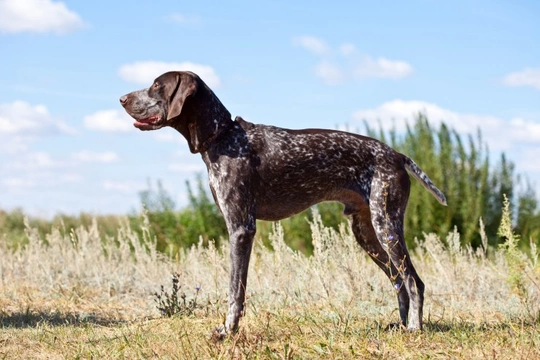
Cone Degeneration (CD) in dogs
Cone degeneration is a hereditary health condition that affects the eyes of dogs, due to degeneration of the cones of the eyes, the parts of the retina that react to light stimulus and pass messages back to the brain to provide the picture that makes up the dog’s view of the world.
Cone degeneration leads to “day blindness,” or an inability to see properly in bright (rather than dim) light, as well as developing photophobia, which means sensitivity to light that can actually be painful.
The condition cannot be caught or transferred from dog to dog other than by means of heredity via the breed line, and this means that cone degeneration is a hereditary condition that can become prevalent in certain pedigree dog breeds because their gene pools are relatively small in the wider scheme of things.
In order to prevent cone degeneration spreading throughout the breed line through subsequent generations of dogs, The Kennel Club and the British Veterinary Association run a testing scheme for breeds affected by the condition, so that owners can make an informed decision on the viability of any given match of dogs.
In this article, we will look at cone degeneration in dogs in more detail, including how the heredity of the condition works, what sort of dogs can be affected, and how to get your dog tested for the condition. Read on to learn more.
More about cone degeneration in dogs
Cone degeneration affects the eye’s retinal cones, leading to both a loss of vision in bright light and photophobia, or irritation and pain in bright light.
The condition can usually be diagnosed in dogs when they are relatively young, generally before three months of age, as the puppies will display the symptoms of photosensitivity from an early stage. This manifests as avoidance of light, and indications of pain and being unable to see properly in full daylight. Unlike most other progressive degenerative canine eye conditions, vision in dim lighting will be normal.
Examination of the retina by a veterinary ophthalmologist usually returns a normal result in young puppies, but as the condition is progressive and worsens as the dog ages, and can be detected later on.
What sort of dogs can be affected by cone degeneration?
Cone degeneration is a hereditary health condition, which occurs at a high enough incidence rate within the gene pools of certain breeds to warrant pre-breeding screening. The breeds in the UK for which pre-breeding screening is recommended are the German shorthaired pointer, Alaskan malamute, and Australian shepherd.
This means that both pedigree dogs of these breeds may inherit the condition from their ancestors, and also, any cross breed or mixed breed dog with ancestry from one of these breeds may potentially inherit the condition too.
How does the heredity of the condition work?
Cone degeneration in dogs is an autosomal recessive condition, which means that for a puppy to be affected with it, they need to inherit a specific set of genes from their parent dogs. Different combinations of status, expressed as clear, carrier or affected, lead to different results in the puppies, which are outlined below:
- Two clear parents will produce clear puppies.
- Two affected parents will produce affected puppies.
- Two carrier parents will produce a mixed litter of 50% carriers, 25% affected, and 25% clear.
- A clear dog and a carrier will produce a litter that is 50% clear and 50% carrier.
- An affected dog and a carrier will produce a litter that is 50% affected and 50% carrier.
- A clear dog and an affected dog will produce a litter of carriers.
Obviously, the optimum match for good health when it comes to picking potential parent dogs is to breed only dogs that return a clear status; however, narrowing the gene pool of the affected breeds to this extent can lead to the potential for the development of further hereditary health defects in the wider breed, and so this is not always viable.
Making the right choice of status when it comes to the parent is something that takes time and consideration, and testing for the markers of cone degeneration in affected breeds is the only way to get the necessary information to make an informed decision.
How to get your dog tested
In order to get your dog tested for their cone degeneration status, you will just need to ask your vet to take a DNA sample from your dog, which will usually be in the form of a buccal swab or a blood sample, which can then be tested by one of The Kennel Club’s approved laboratories, who can identify the markers of the condition.
The laboratory will then identify the status of your dog from the three available forms-clear, carrier or affected-and then return the results to you.



